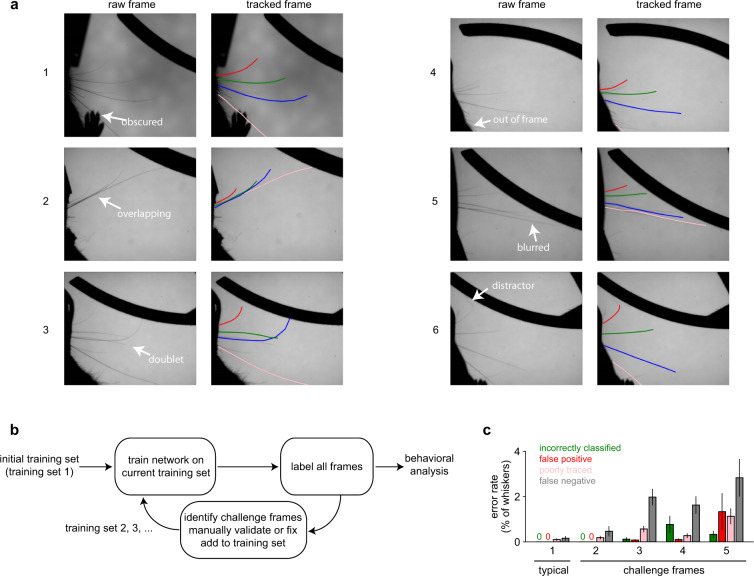Fig. 2.
An iterative method for training a pose tracking network. This figure is adapted from Supplemental Fig. 2 in ref. 8. (a) Example frames demonstrating the quality of the whisker tracking. Within each pair of frames, the left frame is the raw frame (annotated with the region of interest) and the right frame shows the result of the whisker tracking algorithm. Performance was good (i.e., the correct whiskers were tracked throughout their extent) even when: 1) the whisker was obscured by a paw; 2) whiskers were nearly overlapping; 3) a “doublet” whisker emerged from the same follicle; 4) the whisker was nearly out of frame; 5) motion blurred the tips; 6) a similar-looking distractor hair was attached to the end of the whisker. (b) We used an iterative procedure to train the network, repeatedly identifying “challenge frames” on which it struggled and using those to generate the next training set. (c) Error rates for the initial training set of typical frames (training set 1), as well as each set of increasingly difficult challenge frames (training set 2–5).

